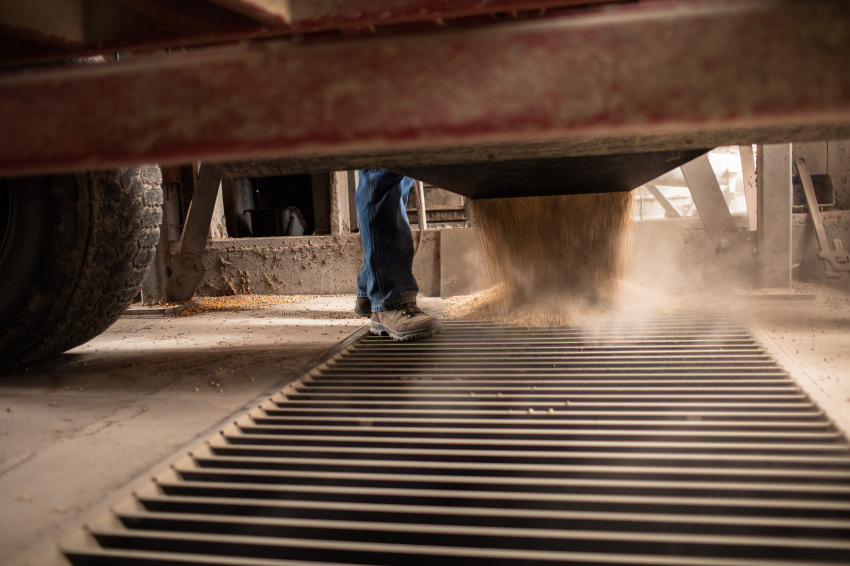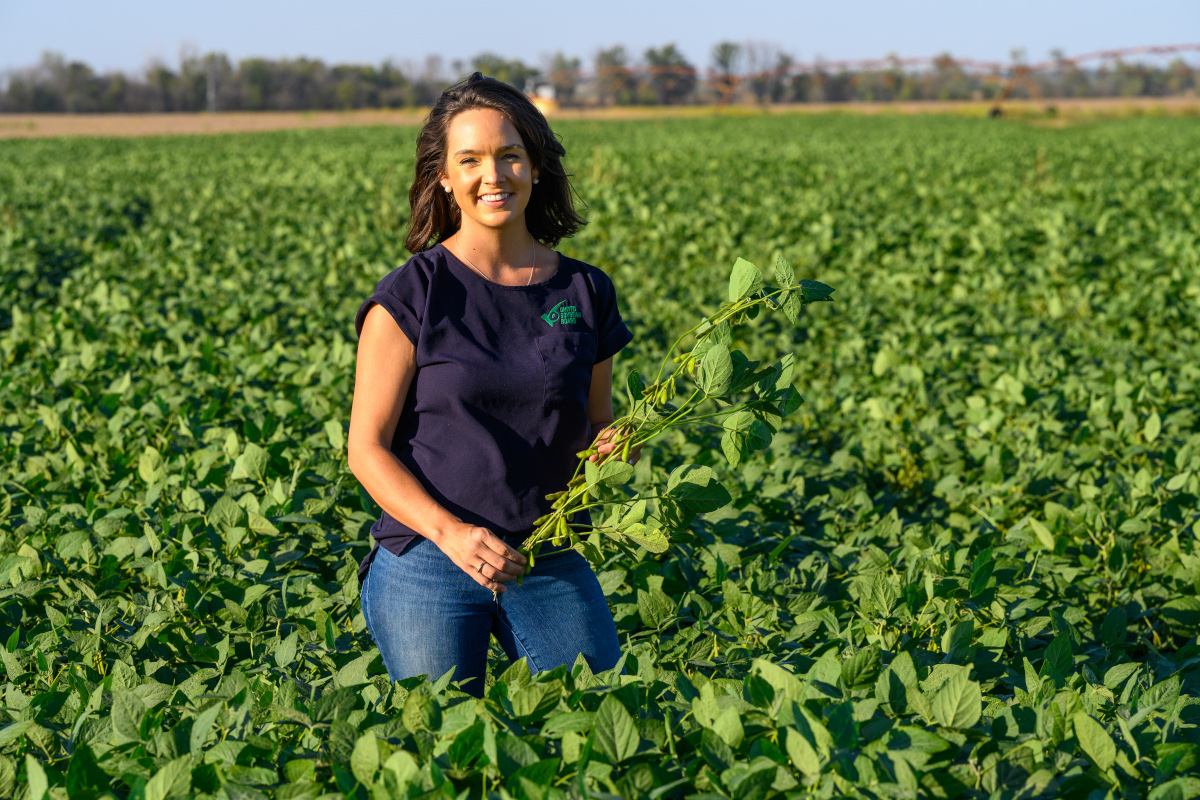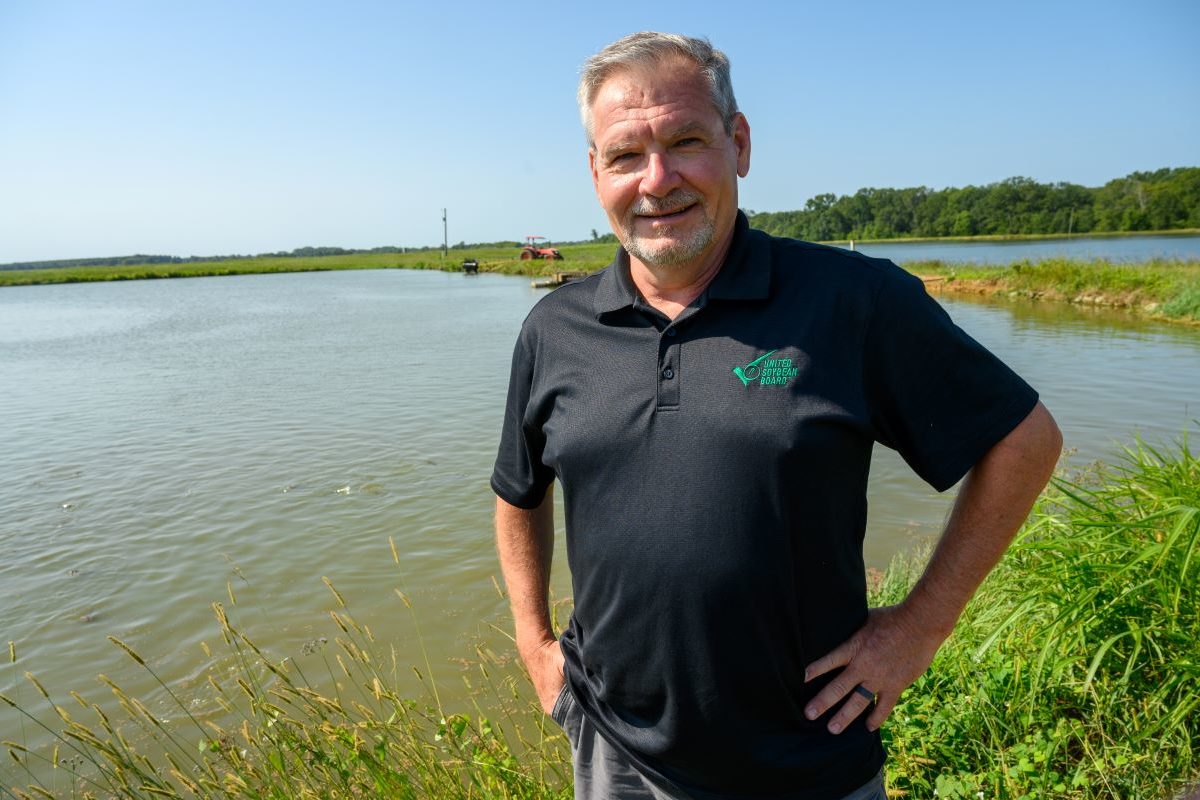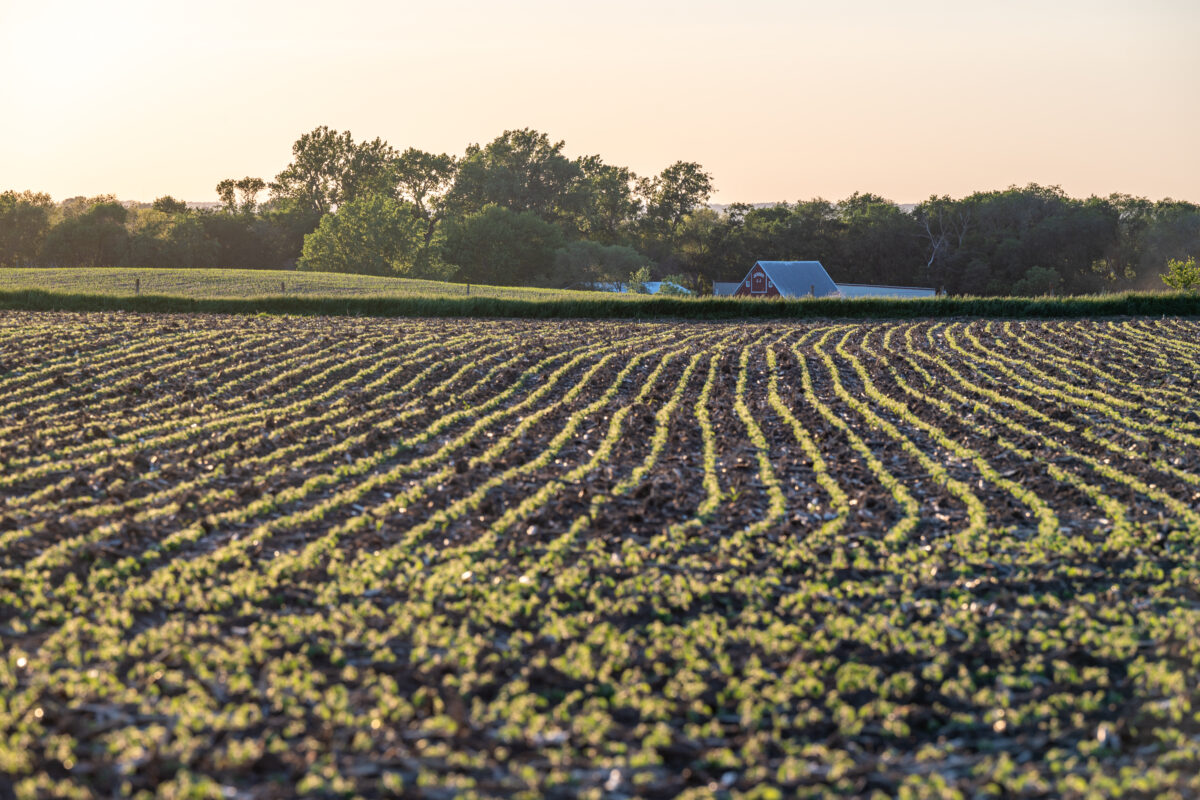From Empty Shelves to Record Plantings: Farmers Showed Resilience During an Uncertain Year

We all saw the empty shelves and sparse freezers. As the pandemic reached cities and towns across the U.S. last spring, many shoppers were left wondering where their food was and when it would reappear in grocery stores.
The most recent Gallup Poll shows, for the first time in 20 years, farming and agriculture rocketed to the top of the public’s interest. Meagerly stocked grocery store shelves got people thinking about where their food really comes from.
The soy checkoff has remained committed to providing a safe, high-quality product by continuing work to support U.S. soybean farmers and the soy supply chain. In addition, the checkoff’s farmer-leaders and staff continue to stay engaged with peer organizations across the various commodities and soybean value chain to mitigate potential uncertainties while sharing important messages about the ongoing resiliency of hardworking farmers who serve as its foundation.
A year ago, while many people were concerned about emptying grocery store shelves, Lewis Rone, a Missouri farmer and soy checkoff farmer-leader, says he wondered where he would take his soybeans nearly seven months later, after harvest.
“In our area, all of our soybeans go to exports. If our supply chain, being the barges and elevators, shut down, we wouldn’t be able to harvest because we’d have no place to take it,” he says. “The question wasn’t is someone going to buy our beans — the question was if they’d have employees healthy enough to take them.”
When contracting his crop, Rone says he made it a point to discuss this and ask about delivery options. And as he gears up for the 2021 season, he’s insulating his operation against future uncertainty by building more on-farm storage.
Keith Harris, associate professor in the department of agricultural economics at Kansas State University, echoed some of Rone’s thoughts and voiced his confidence in the U.S. soybean supply chain. Harris specializes in analyzing the agri-food supply chains within complex networks of differing chain partners and relationships.
“When I look at the soybean food supply chain, I don’t see much of a disruption. Storage of row crops takes less human contact, as does the processing stage. A lot of those areas, where soybeans could have been affected by human contact, aren’t because there isn’t a substantial amount of labor,” Harris says. “The processing and storage plants are running mostly by machinery and equipment.”
Planting with Uncertainty
As seedlings made their appearance last spring and USDA forecasted a plentiful crop, Rone felt a sense of uncertainty about finding the inputs he needed, such as machinery parts and chemicals. But Rone was certain of one thing: he needed to keep his employees safe and his farm operating.
Some of Rone’s employees are retired farmers themselves, falling into the at-risk age category, which prompted Rone to take extra precautions.
“We immediately added cleaning supplies in our tractors, trucks and common areas,” says Rone. “When you go to the field, it’s easier. Everyone is social distancing anyway because you’re in separate tractors.”
The employees were also split into teams to prevent multiple points of contact and stayed with certain pieces of equipment. If they had to switch, the equipment was thoroughly cleaned first.
“You did all the things that you could do to keep everyone going, to keep everyone healthy,” he says. It’s this caring, pragmatic approach that keeps farmers among the most trusted links in the agricultural value chain when it comes to food safety, taking the top spot in 78% of consumer responses in a recent checkoff study.
Crops and Markets
In January 2020, soybean prices were around $9.40 per bushel, then dipped to between $8 and $9 per bushel between April and August.
Amid the uncertainty, the soy checkoff saw the need to bring clarity to market fluctuations and evaluate how certain conditions impact strategic investments for U.S. soybean farmers. The checkoff brought Mac Marshall on board in June to serve as vice president of market intelligence for the United Soybean Board and U.S. Soybean Export Council. Marshall supports U.S. soybean farmers in this role for the United Soybean Board and the U.S. Soybean Export Council.
Marshall regularly shares his insights with farmers about the monthly USDA World Agricultural Supply and Demand Estimates report through monthly webinars and USB’s Market Intelligence page.
“The checkoff understood that farmers were going through a turbulent time,” says Belinda Burrier, Maryland soybean farmer and soy checkoff Marketplace Action Team chair. “Mac Marshall’s addition to our team has added clarity about the soybean market during uncharted times — something we were all looking for.”
Upward trending prices with a positive yield gave Rone and other farmers opportunity and confidence to expand areas of their operations.
“Now with the crop that everyone made and prices of commodities up, farmers are buying more equipment and other things,” says Rone.
Despite the Pandemic, Farmers Worked
As the season unfolded, Rone remained concerned about the infrastructure getting his soybeans exported, but he says his 2020 soybean season carried on relatively normally.
Handshakes were replaced by emails, and in-person meetings were replaced by Zoom calls for farmers and the checkoff alike. Still, the crop grew, and harvest began as expected. Demand for U.S. soybeans didn’t falter, as soy partner organizations like USSEC also adapted to new technologies to continue fostering demand for U.S. soy around the world — easing supply chain concerns for farmers.
The soy checkoff has continued to work closely with USSEC, the American Soybean Association and Qualified State Soybean Boards to protect and minimize the impacts to farmers and the soybean supply chain. The checkoff has always placed a premium on face-to-face relationships and has embraced virtual communications technology like never before, to help stay connected to farmers and other value chain partners. Checkoff leaders continue to analyze market conditions, examine trends, stay connected with the industry and build new relationships and programs to help ensure soy remains a reliable source of food, fiber, fuel and more during, and after, the pandemic.
Farmers’ resilience in the face of uncertainty was rewarded. According to the United States Department of Agriculture, farmers harvested over 82 million acres of soybeans in 2020. U.S. soybean fields averaged 50.2 bushels per acre for more than 4.1 billion bushels of soybeans — almost 1 billion bushels more than 2019’s harvest.
As of early March 2021, soybean prices have bounced back to more than $14 per bushel, and USDA projects a 7% increase in acreage and yield. The food industry has adapted to keep grocery shelves filled. The soy checkoff remains focused on its purpose, building demand and connecting farmers with profit opportunities. And farmers continue to show their resilience, no matter the crop prices or market conditions, doing what they do best for the supply chain: growing soybeans for markets near and far.
“Every farmer has had a different experience over the course of the last year,” says Burrier. “What’s important to remember is that we carried on, despite the challenges, and put another harvest in the bin. And we’ll do it again, no matter what the world throws at us.”



